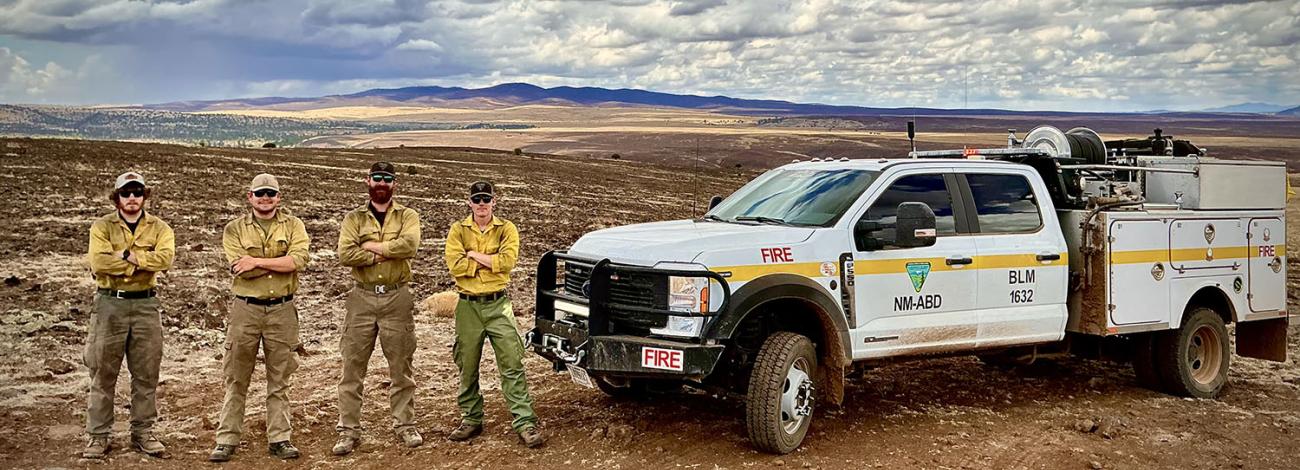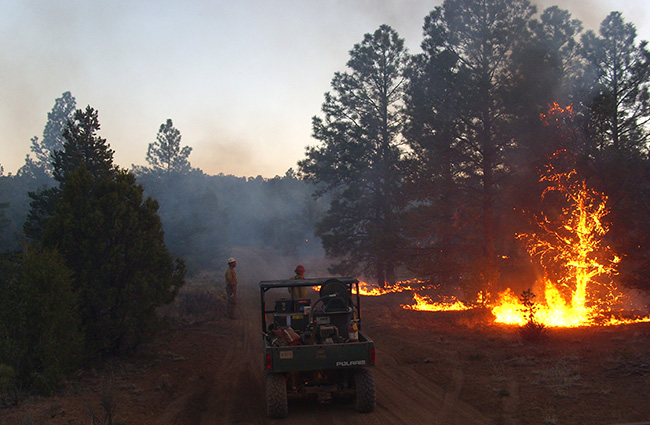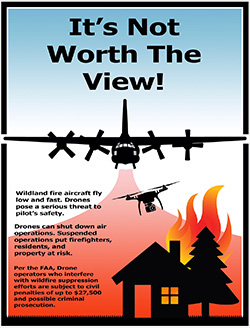
New Mexico Fire Information
BLM-NM/OK/TX/KS has wildland fire management responsibility on 13.5 million acres in four districts within New Mexico, the Texas panhandle (Crossbar), and across portions of Oklahoma and Kansas. This work involves fire suppression, hazardous fuels reduction projects, fostering fire-adapted and resilient communities, training local cooperating fire departments as well as, providing excess equipment to cooperators, and building partnerships to advance natural resource and public safety objectives.
Regional Resources
BLM-NM/OK/TX/KS hosts a fleet of 15 engines and the Rio Puerco Wildland Fire Module. These resources along with various overhead and specialist positions support resource and incident management programs throughout the fire management area. Also incorporated within one of the NM Districts is the Roswell Air Tanker Base, a reload base capable of hosting a variety of aviation platforms. Roswell Base is one of the few BLM air tanker bases that can support very large air tankers. Typically, April through early July is the period in which the Air Tanker Base is fully staffed, and air tankers are utilized for fire suppression. BLM-NM also hosts 4 exclusive use single engine air tanker contracts as well as a shared Air Attack Platform, which provides aerial supervision for wildland fire incidents.
On average, BLM-NM/OK/TX/KS engages in fire management actions on 300 wildfires annually. These activities take place on federal, state, and private lands as a result of BLM land management responsibilities and interagency mutual aid agreements.
Hazardous Fuel Reduction

In order to complete hazardous fuel reduction or ecosystem enhancement projects, we complete environmental compliance and develop implementation plans for prescribed fire, prescribed grazing, mechanical, chemical and biological treatments. This work involves building and maintaining partnerships and long-lasting relationships with our adjoining landowners. It’s not just BLM personnel but we rely heavily upon contracts and cooperative agreements, which help to create jobs and investment in local communities with the overall goal of protecting people, homes, critical infrastructure and our natural resources for generations to come.
Wildfire Risk Reduction Grant Program
BLM-NM/OK/TX/KS provides grants for communities through the Wildfire Risk Reduction Grant Program, a partnership with the New Mexico Counties. Grants are available to update Community Wildfire Protection Plans, treat hazardous fuels, and for outreach and education actions. Outreach and education efforts are aimed at preventing human-caused wildfires, helping communities take action, fostering fire-adapted communities, and increasing understanding of fire’s role in the ecosystem.

